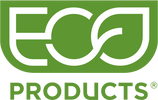LEARN
Access & Recovery
Access and Recovery are the two metrics that determine the success of composting or recycling programs.
The most important thing to know, whether we are talking about composting or recycling, is that economics play a dominant role.
If there isn’t a business incentive to collect, process, and ultimately sell an end-product at a profit, chances are there won’t be a system in place to divert the material from landfills.
What is "Access"?
Whether or not a community has the required infrastructure to collect and process compostable and/or recyclable materials.
What is "Recovery"?
When collection and processing are happening successfully, meaning that the materials are actually being kept out of landfills.
WHAT IS COMPOSTING?
Two Main Types:
Commercial or Industrial Composting
The processing of compostable materials (yard waste, food waste, and compostable packaging) on a large scale and in systems designed to support high volume.
Home or Backyard Composting
The processing of compostable materials (yard and food waste) at a much smaller scale, usually one household in small “backyard” bins or piles.
Most commercial composting facilities in the US accept yard waste only.
There are about 5,000 facilities in the US, and 90% of them don't accept food waste or packaging.
This really limits access to composting systems as well as recovery of compostable resources.
Most composters accept yard yaste only because of:
- Permitting Challenges
- Odor Issues
- Increased risk of contamination that comes with accepting post-consumer material
Of the composters accepting post-consumer food waste and some form of compostable packaging, a number estimated to be around 200 in a 2023 survey by BioCycle Magazine, 71% of them accept some form of compostable, food-contact packaging.
To Improve Composting Access & Recovery we need:
1. Composters to start accepting food waste and compostable packaging in addition to yard waste.
2. New composters to enter the industry who have built businesses designed to accept more than just yard waste.
3. End-markets for composters to sell their finished compost to. Without this, there is no economic incentive for them to do what they do.
Visit our Composting page to learn more about the most important topics and how we are engaged.
WHAT IS RECYCLING?
Recycling is the process by which products are collected, repurposed, and turned into new products.
For the Ellen Macarthur Foundation, "recyclability" must be proven at practice and at scale, and only items that achieve a 30% post-consumer recycling rate meet their definition of recyclability.
According to the most recent data released by the US Plastics Pact, only HDPE bottles (think milk jugs) are collected, repurposed, and turned into new products more than 30% of the time in the United States.
Just like with composting, the viability of recycling is dependent on the value of the materials in question, and the existence of end markets for them.
National Sword Policy in China Revealed Realities of Recycling in the US
For many years, vast quantities of US plastics were exported to China to be processed and recycled. In March of 2018, the Chinese government implemented “National Sword”, a policy designed to limit imports of low value materials and contaminated, mixed loads of materials intended for recycling.
National Sword has forced recycling programs in the US to try to find new buyers for certain material streams. These challenges exposed how recycling actually works, or doesn't, to many consumers in the US for the first time.
Recycling in the foodservice industry is particularly challenging
Contamination from food residue combined with an astonishing array of shapes and material types make it difficult to produce material streams that have value for recyclers.
If the system isn’t working more than 30% of the time for clean, consistent, “easy to recycle” items like water and soda bottles, it is easy to see why recycling is not an option for much of the packaging used for foodservice.
Compostability and Recyclability Marketing Claims
The Federal Trade Commission (FTC) regulates how manufacturers, brands, and others communicate with consumers about compostability and recyclability. As detailed in the FTC's Green Guides:
Claims of compostability and recyclability must be qualified when a “substantial majority” (defined as 60% of consumers or communities) do not have access to the facilities and collection programs necessary to compost or recycle the item in question.
The qualifying language must communicate the limited availability of facilities and programs, and in the case of compostable products, must specify when an item is not home compostable.
Almost all Eco-Products items, whether they are in the GreenStripe® or BlueStripe® line, are currently below the FTC’s 60% access threshold.
So you won’t see the words “Compostable” or “Recyclable” on any of our products or packaging without additional messaging regarding accessibility to proper services and infrastructure.
